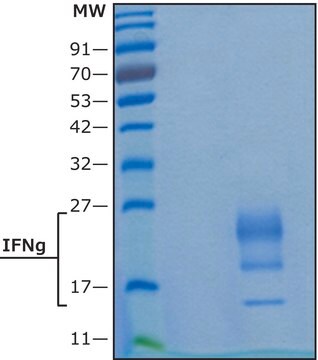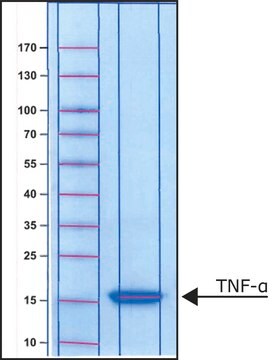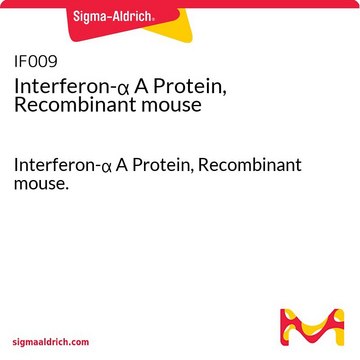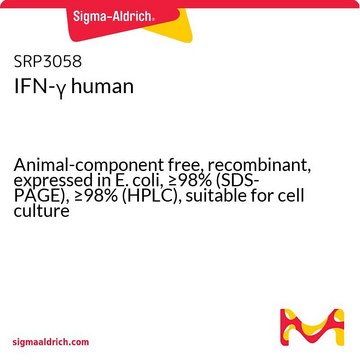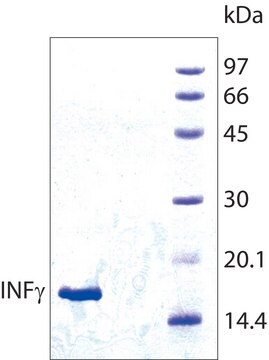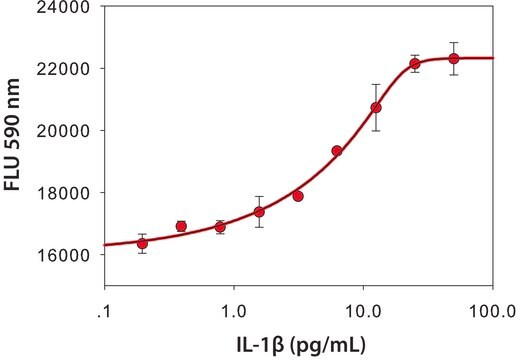IF005
Interferon-γ Protein, Recombinant mouse
The Interferon-gamma protein (or IFN-gamma protein) is a regulatory protein produced by activated NK cells & CD4+TCRalpha/beta+, CD8+TCRalpha/beta+ & TCRgamma/delta+ T cells.
Synonim(y):
IFN g, IFN gamma, IFN γ, INF g, INF gamma, INF γ
About This Item
Polecane produkty
pochodzenie biologiczne
mouse
Poziom jakości
Próba
>98% (SDS-PAGE and HPLC)
Formularz
liquid
aktywność właściwa
≥1.0 x 10E7 U/mg
producent / nazwa handlowa
Chemicon®
metody
cell culture | mammalian: suitable
zanieczyszczenia
<0.1 ng/μg endotoxin (of IFN-gamma; 1EU/μg)
moc wejściowa
sample type mesenchymal stem cell(s)
sample type hematopoietic stem cell(s)
Warunki transportu
dry ice
Opis ogólny
Zastosowanie
Działania biochem./fizjol.
Postać fizyczna
Przechowywanie i stabilność
Informacje prawne
Oświadczenie o zrzeczeniu się odpowiedzialności
Kod klasy składowania
12 - Non Combustible Liquids
Klasa zagrożenia wodnego (WGK)
WGK 2
Temperatura zapłonu (°F)
Not applicable
Temperatura zapłonu (°C)
Not applicable
Certyfikaty analizy (CoA)
Poszukaj Certyfikaty analizy (CoA), wpisując numer partii/serii produktów. Numery serii i partii można znaleźć na etykiecie produktu po słowach „seria” lub „partia”.
Masz już ten produkt?
Dokumenty związane z niedawno zakupionymi produktami zostały zamieszczone w Bibliotece dokumentów.
Klienci oglądali również te produkty
Nasz zespół naukowców ma doświadczenie we wszystkich obszarach badań, w tym w naukach przyrodniczych, materiałoznawstwie, syntezie chemicznej, chromatografii, analityce i wielu innych dziedzinach.
Skontaktuj się z zespołem ds. pomocy technicznej

